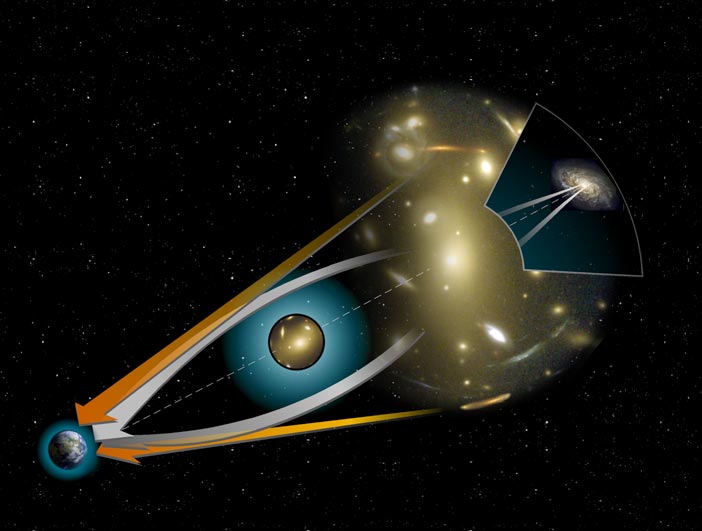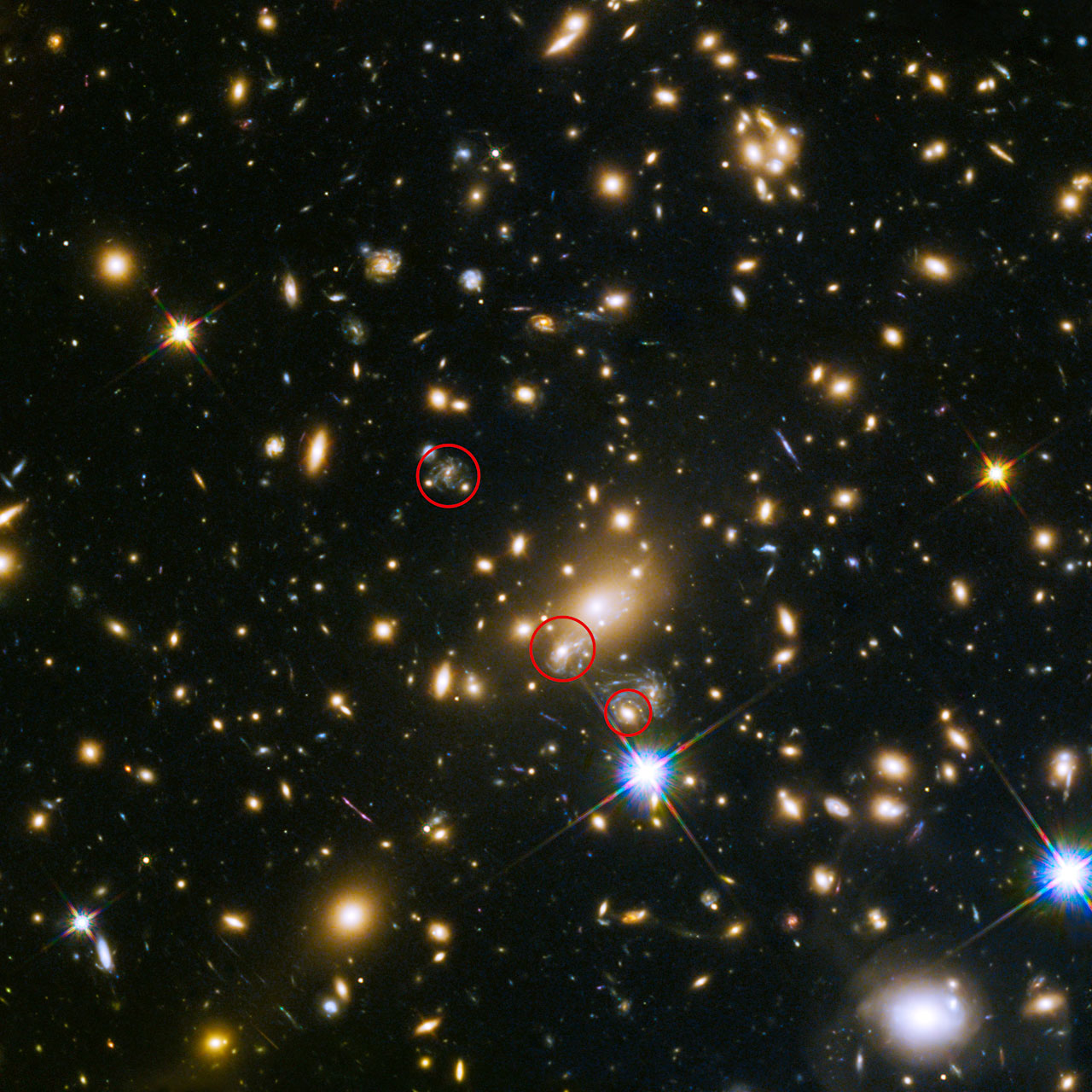In early 2016, astronomers will be looking at a specific part of the sky, knowing with near certainty that a supernova will appear. How is it possible to predict such events? The answer has to do with an effect known as gravitational lensing.
Technically, the 2016 supernova is a “replay” of the supernova Refsdal, first observed by astronomers in November 2014. They observed four different visual instances of it. The light from this massive stellar explosion appeared in multiple parts of the sky because a huge galaxy cluster, MACS J1149+2223, was directly in front of it.

An illustration of gravitational lensing. But instead of a galaxy, imagine a supernova. (Image: Public domain)
Logically, the supernova should be obscured by the galaxy cluster. But the cluster’s tremendous gravitational forces are bending space-time around it. The effect, known as gravitational lensing, essentially turns the cluster into a gigantic magnifying glass.
A visualisation of gravitational lensing (Credit: ESA/YouTube)
Together, the formation of the four supernova images is known as an Einstein Cross. Astronomers have seen this sort of thing before in the form of duplicated images of galaxies, but this is the first time it has ever been seen in a supernova.

Supernova Refsdal. The top circle shows the position of the Supernova as it was seen in 1995. The bottom circle shows the galaxy which lensed the Refsdal Supernova four times. The circle in the middle shows the predicted position of the reappearing Supernova in early 2016. (Image and caption credit Hubble/NASA/ESA)
The four images of the supernova are now fading away as the explosion simmers down — but astronomers are anticipating a replay of Refsdal early next year. As noted in a Hubble Space Telescope release,
The supernova images do not arrive on Earth at the same time because, for each image produced, the light takes a different route. For some of these routes, the light takes longer to reach us than for others.
So, by using various models of the cluster acting as a lens, the astronomers have created a set of predictions for when it will appear again. Their best guess is some time during the first third of 2016. The Hubble team will be ready.
